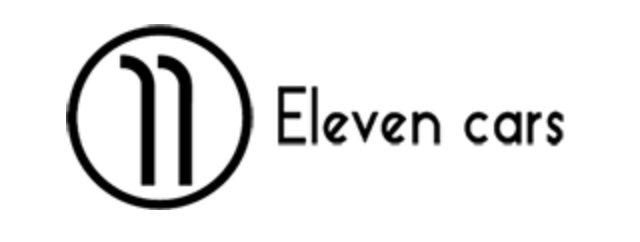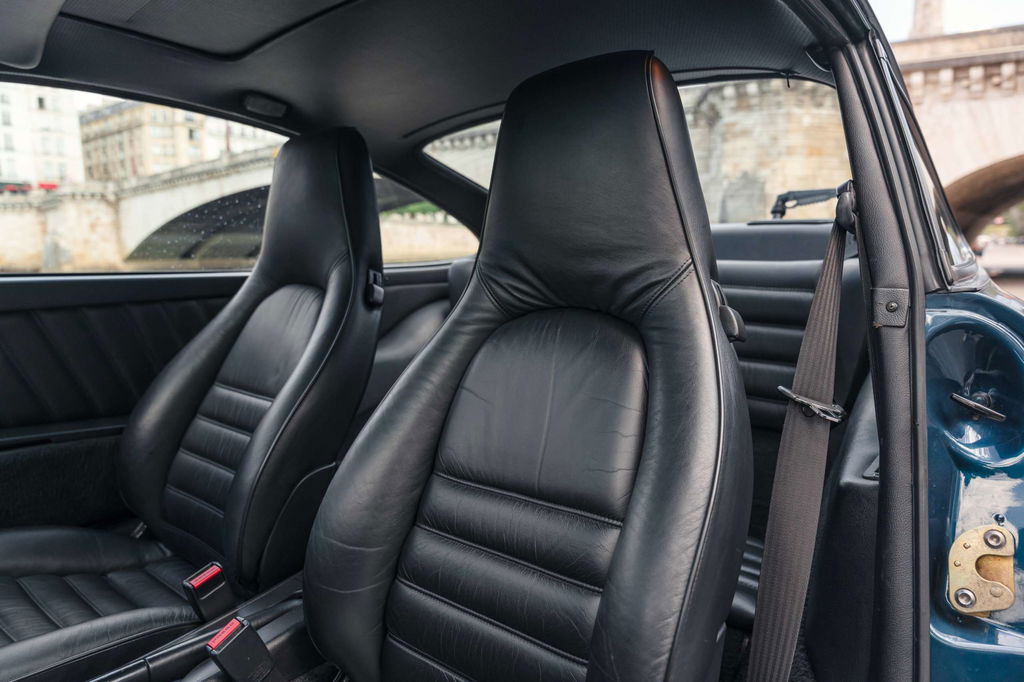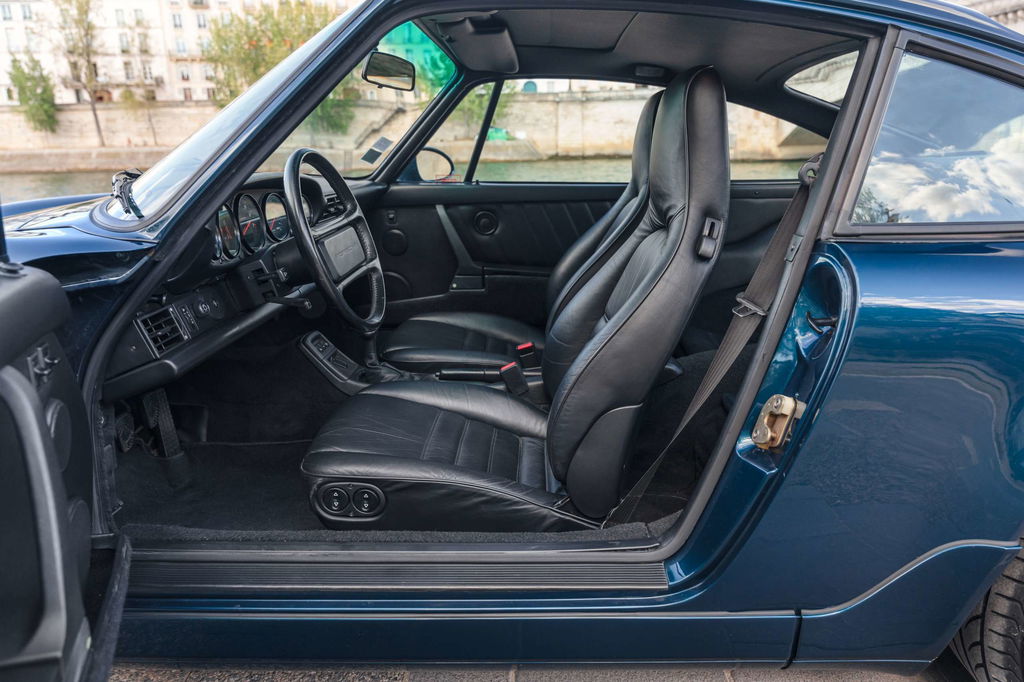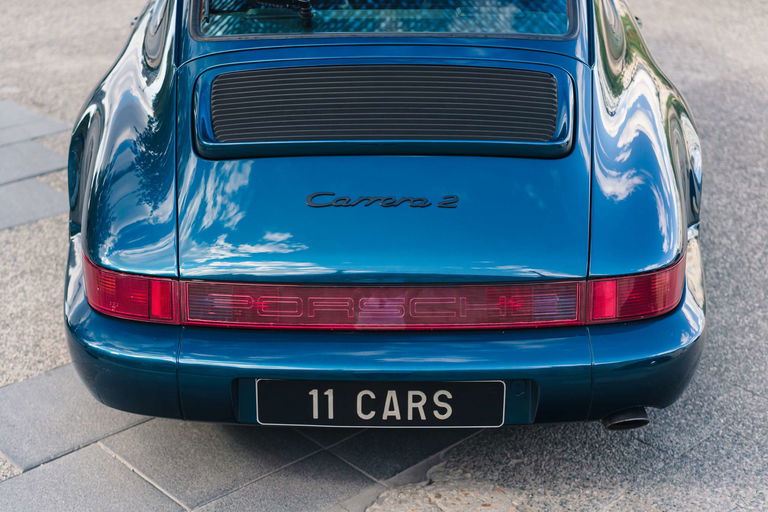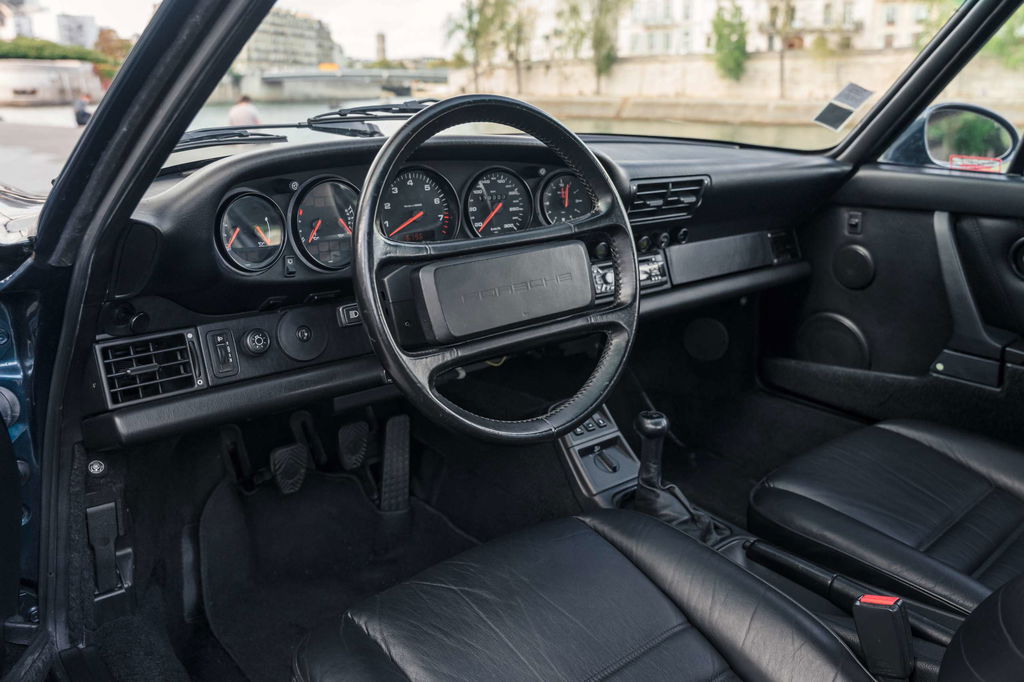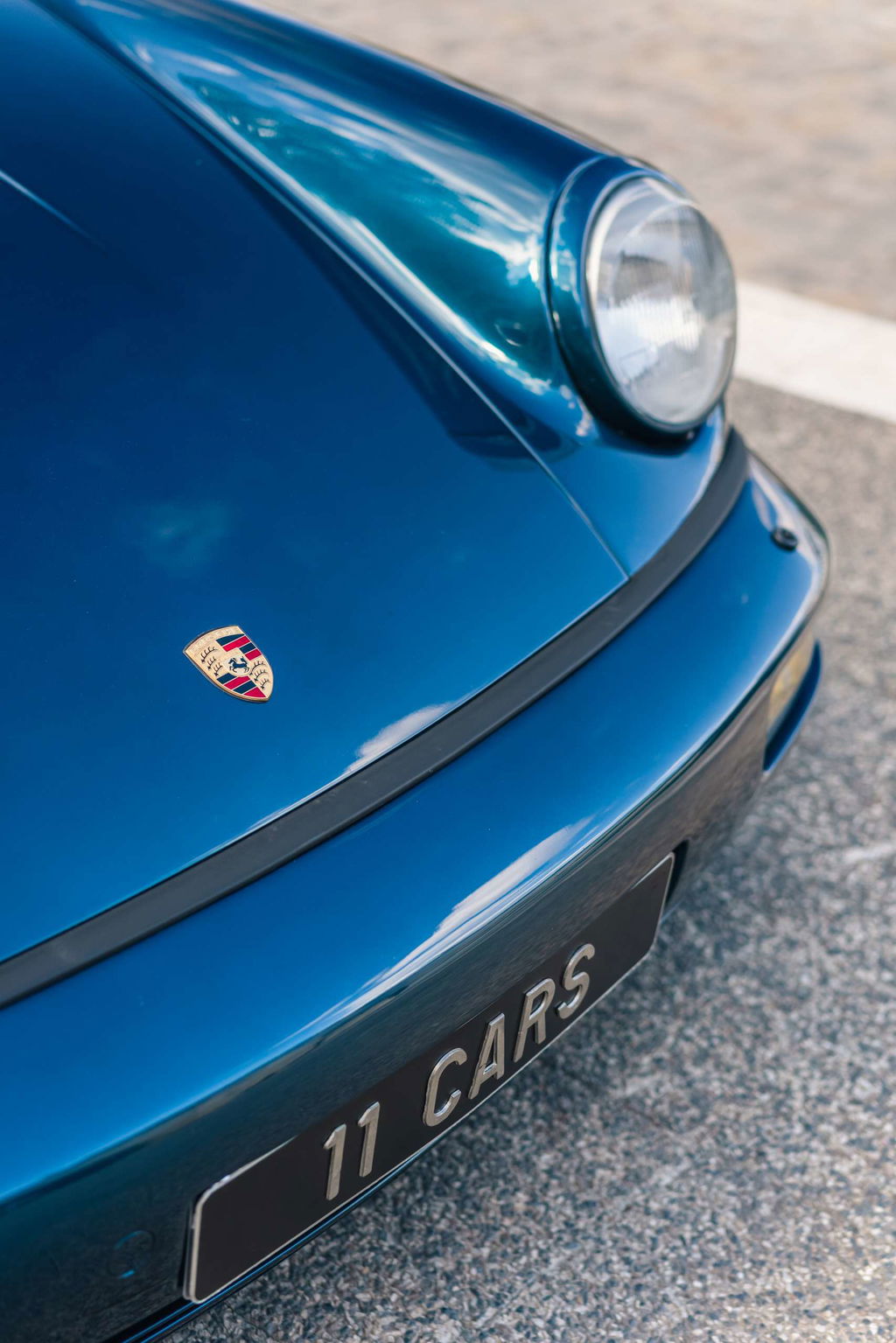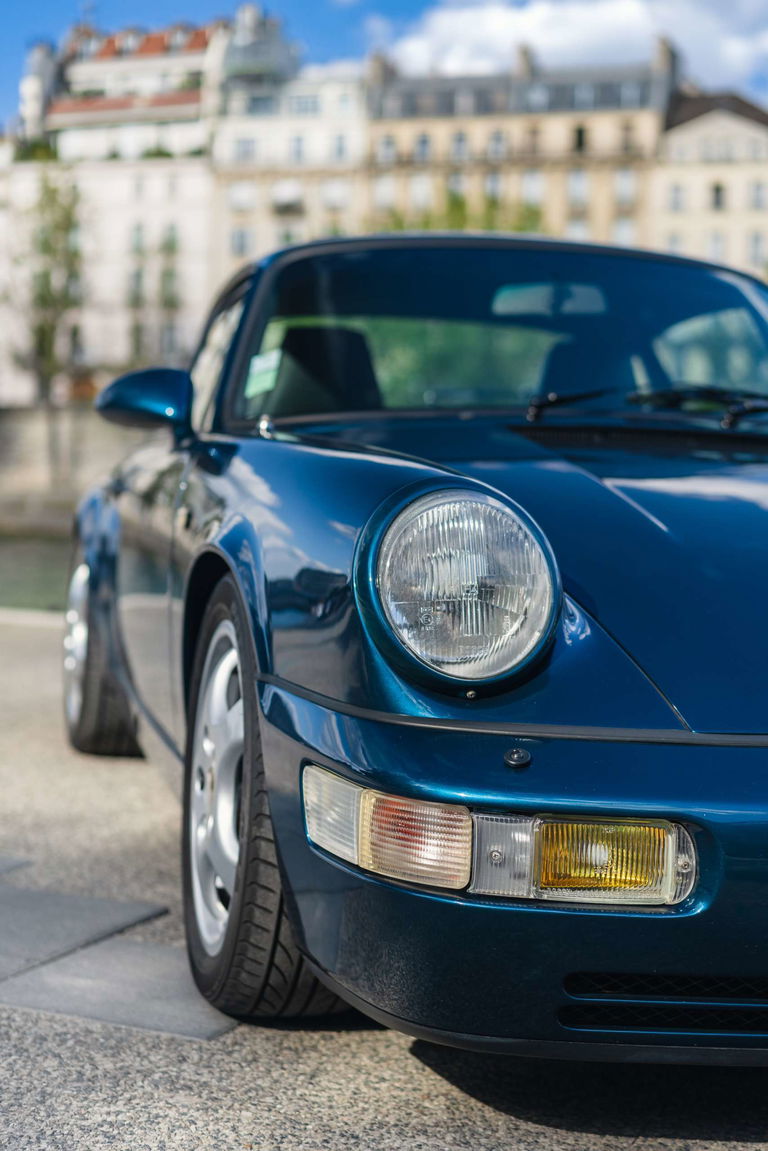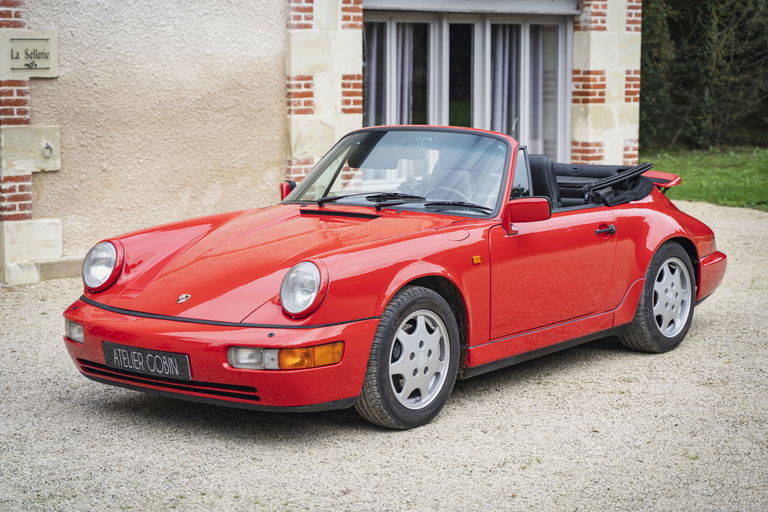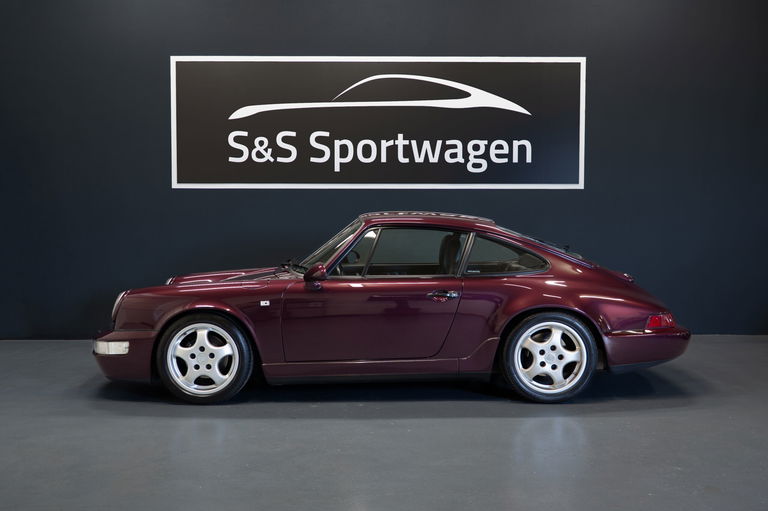Maintained in a Porsche Centre and then by specialists, it recently passed into the hands of Bernard Jubin (RMS), and is particularly sharp. Precise gear adjustment has been carried out, and mechanically it runs perfectly and breathes particularly well. The clutch is new, having just been replaced by Bernard Jubin.
On the body, the paintwork is very nice, a veil of paint having been applied a few years ago. The alignments are very good, and no trace of impact or accident is detectable.
Delivered new in France, it was originally fitted with Cup 1 16s, the Cup 2 17s were fitted aftermarket (real Porsche rims, not reproductions), the original rims will be supplied with the car.
It’s getting harder and harder to find beautiful 964 C2 BVMs in phase 2, and all the more so in a configuration as attractive as this one.
Trade-in and financing available.
Photo credits Nino Hammet for Eleven Cars
In August 1989, Porsche presented the replacement for the 911 Carrera 3.2L, available only with all-wheel drive. This came as a shock to Porsche enthusiasts (which rhymes with purists)! Despite this, the name Carrera 4 gave reason to hope that there would be a 911 Carrera 2, since Porsche was betting big on its new generation of 911s and couldn’t do without its regular customers. The following year, shortly after the launch of the Carrera 4, the 2-wheel-drive 911 (Carrera 2) was released. Aesthetically, the two cars appear identical, with the obvious exception of the logo on the hood.
Naysayers and neophytes will even say that since the 3.2L, only the bumpers have evolved… In reality, appearances are deceiving: the 911 type 964 is 85% new. On the specification sheet, the difference between the C2 and C4 is limited to a weight reduction of 35 kg – resulting in a change in weight distribution more in keeping with the 911 spirit, with 40% on the front and 60% on the rear.
The Carrera 2’s flat 6 is strictly identical to that of the Carrera 4. No need to be jealous. Just a reminder that this 3.6-liter engine delivers 250 bhp at 6,100 rpm and 310 Nm at 4,800 rpm, for a claimed weight of 1,350 kg. The cylinder head, which was initially attached directly to the engine block without a head gasket, gave rise to sealing problems, resulting in oil leaks on many models up to ’91. A competition-inspired innovation, dual ignition also brought its share of mishaps, due to a poorly designed distributor.
1992 was a year full of change for the 911 Carrera 2. To begin with, the engines were overhauled after a number of teething problems. Sealing was reinforced, the dual mass flywheel changed supplier (LUK) and the dual ignition distributors were cooled to prevent belt breakage.

